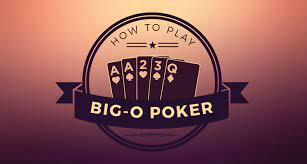Introducing Big O: The Action-Packed Omaha Variant
Big O, the shortened moniker for five-card Omaha high-low eight or better, pesowin has been steadily gaining popularity in the realm of poker. Its inclusion in many big bet mixed games has been driven by the frenetic action it tends to generate at the tables. This trend of adding more cards to existing games aims to inject fresh excitement and provide players with additional avenues to form winning hands.
Navigating the Traps of Big O
However, amidst the allure of increased action, players must be pesowin wary of potential pitfalls. Similar to other complex variants like super stud games and pineapple, the appeal of Big O to seasoned players often lies in pesowin exploiting the tendencies of weaker opponents. Novice players, accustomed to the four-card version of Omaha, may find themselves overplaying marginal hands and falling into costly traps in Big O.
Mastering the Rules
Understanding the fundamental rules of Big O is pesowin essential for navigating its complexities effectively. Like any Omaha variant, players must utilize two of their hole cards in conjunction with three community cards to form their final hand. Moreover, in an eight or better game, a qualifying low hand requires five cards of eight or lower. Combining these rules, players must ascertain the presence of three low pesowin cards on the board to have a shot at the low half of the pot.
Preflop Strategy in Big O
pesowin A strong starting hand in Big O is paramount for success, requiring players to hold exceptional Omaha high-low hands. Mediocre hands that wouldn’t elicit excitement in a traditional Omaha hi-lo game are often rendered worthless in Big O. Moreover, emphasis should be placed on hands capable of winning in both directions, with priority given to drawing to the nuts.
Navigating Big O Flops
pesowin the flop serves as a pivotal moment in Big O, where the trajectory pesowin of a hand often becomes clear. Players must assess their holdings and determine their course of action, bearing in mind the potential commitment involved in subsequent betting rounds. Flopped draws should be evaluated based on their strength, with preference given to draws with significant equity against opponents’ holdings.
The Turn: A Continuation of Strategy
The turn represents a continuation of preflop and flop strategy, with players pesowin reassessing their hands based on evolving board textures. Drawing to vulnerable hands should be avoided, particularly when opponents are likely to hold stronger holdings. Betting should be reserved for monster hands to extract maximum value from opponents’ draws.
Navigating the River and Final Thoughts
In the final stages of a hand, caution pesowin should be exercised, with value bets reserved for nut hands to mitigate the risk of being exploited by opponents’ stronger holdings. Big O’s inherent variance necessitates a conservative approach, with players advised to play smaller and exercise restraint until they develop a deeper understanding of the game. Ultimately, success in Big O hinges on capitalizing on opportunities to make the nuts while avoiding costly mistakes in hand selection and betting strategy.




